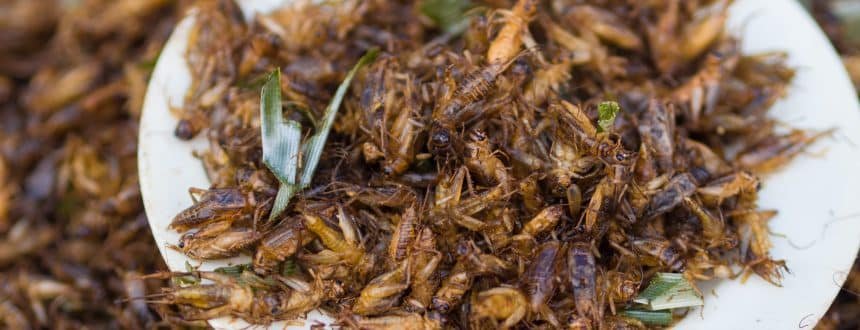Ground African crickets to be used to fortify porridge, experts say..
By Mwangi Mumero
The insect is said to be rich in crude protein, fat, essential amino acids, minerals, and vitamins
Ground African crickets can now be used to boost the protein and nutrient content of porridge, a common food for infants, nursing mothers and the elderly, a new report produced by researchers from the International Centre for InsectPhysiology and Ecology (Icipe) in Nairobi, says.
According to the researchers, although the predominant African porridge cereals such as sorghum and finger millet, are rich in carbohydrates, they are extremely low in energy and nutrient densities.
This is partly because cereals contain anti-nutrient compounds that block the absorption of certain essential nutrients in the body.
In this form of food-to-food bio fortification, researchers now believe that crickets can be used to improve the nutritive value of porridge and benefit the weaned infants and other consumers.
“We tackled this challenge from two angles. First, we fortified finger millet with high-quality nutrients from an edible African cricket known as Scapsipedus icipe; and the grain of amaranth, an indigenous vegetable that is widely grown
across the continent,” says one of the researchers, Ms Nelly Maiyo. She was involved in the research as part of her MSc studies at Icipe, through the University of Nairobi.
Farmed in some areas in Kenya, the cricket, S. icipe, was discovered by the centre in 2018, as a new species in science.
In their findings published in the Foods journal, researchers show that cricket is significantly rich in crude protein and fat, which, respectively, make up 57 per cent and 36 per cent of its dry body weight mass.
The insect is also rich in essential amino acids, minerals and vitamins, with 88 per cent of its nutrients being digestible by the human body.
Often cultivated for its leaves or grains, amaranth is known for its high levels of vitamin C and pro-Vitamin A, as well iron, zinc, and calcium. Its grains are also rich in protein and calcium.
Researchers also found out that germination and fermentation techniques in finger millet and amaranth improved the availability of nutrients in the two grains. According to the experts, the flavour-full, fortified porridge flour has twice as much protein, three to four times more crude fat and double the amount of iron and zinc.
Depending on the processing technique, the cricket-fortified porridge contains up to 17 times more vitamin B5; almost one-and-a-half times more Vitamin B9; and 12 times more
Vitamin B12; than commercially available brands. The product also has the three essential omega-3 fatty acids.
“To put our breakthrough into context, the recommended daily protein intake and energy in children aged between one and three years is 13 grammes per 100 grammes; and 400 kilocalories per 100 grammes, of any food consumed per day.



